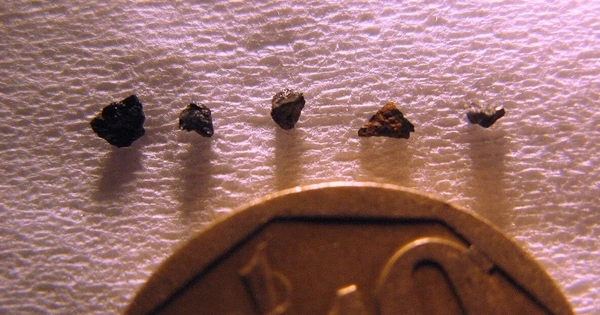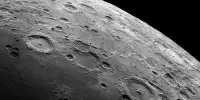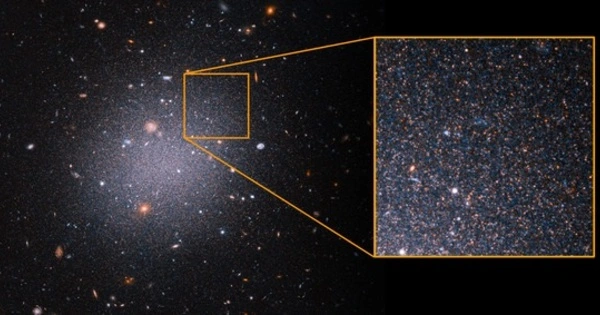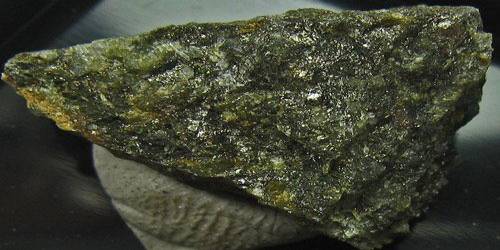The extraterrestrial Hypatia stone discovered in Egypt may be the first concrete evidence of a supernova type Ia explosion on Earth. These extremely infrequent supernovae are among the most intense explosions in the cosmos. If the hypothesis is right, Hypatia would be ‘forensic’ evidence to an epic cosmic drama that began somewhere during our solar system’s early development.
According to new chemistry forensics, the Egyptian desert stone Hypatia may be the first physical evidence of a supernova type Ia explosion found on Earth. These extremely infrequent supernovae are among the most intense explosions in the cosmos.
This is the result of a recent study by Jan Kramers, Georgy Belyanin, and Hartmut Winkler of the University of Johannesburg, among others, published in the journal Icarus. Belyanin and Kramers uncovered a series of highly unexpected chemical indications in a small part of the Hypatia Stone since 2013.
In the current study, they meticulously eliminate ‘cosmic suspects’ for the stone’s origin. They have cobbled together a timeline that goes back to the early phases of the formation of the Earth, Sun, and other planets in our solar system.
A cosmic timeline
Their theory concerning Hypatia’s origin begins with a star: A red giant star shrank to the size of a white dwarf star. The collapse would have occurred within a massive dust cloud known as a nebula. That white dwarf was in a binary system with another star. The other star was subsequently ‘eaten’ by the white dwarf star. Inside the dust cloud, the ‘hungry’ white dwarf erupted as a supernova type Ia at some point.
After cooling, the gas atoms which remained of the supernova Ia started sticking to the particles of the dust cloud. “In a sense we could say, we have ‘caught’ a supernova Ia explosion ‘in the act’, because the gas atoms from the explosion were caught in the surrounding dust cloud, which eventually formed Hypatia’s parent body,” says Kramers.
This supernova dust-and-gas-atoms mix formed a massive ‘bubble’ that never interacted with other dust clouds. Millions of years would pass, and the ‘bubble’ would finally solidify, much like a ‘cosmic dust bunny.’ Hypatia’s ‘parent body’ would solidify at some point during the early phases of our solar system’s creation.
This process most likely occurred in a frigid, uninteresting region of our solar system, such as the Oort cloud or the Kuiper belt. Hypatia’s parent rock began hurtling towards Earth at some time. The heat of entry into the earth’s atmosphere, along with the pressure of impact in Egypt’s Great Sand Sea, generated micro-diamonds and fragmented the parent rock.
The Hypatia stone picked up in the desert must be one of many fragments of the original impactor.
“If this hypothesis is correct, the Hypatia stone would be the first tangible evidence on Earth of a supernova type Ia explosion. Perhaps equally important, it shows that an individual anomalous ‘parcel’ of dust from outer space could actually be incorporated in the solar nebula that our solar system was formed from, without being fully mixed in,” says Kramers.
“This goes against the conventional view that dust which our solar system was formed from, was thoroughly mixed.”
We discovered a constant pattern of trace element abundances that is unlike anything else in the solar system, primitive or advanced. This is also not supported by objects in the asteroid belt or meteors. So we explored outside the solar system next.
Jan Kramers
Three million volts for a tiny sample
The researchers utilized multiple approaches to analyze the odd stone in order to piece together a timeline of how Hypatia may have formed. An analysis of argon isotopes in 2013 revealed that the rock did not develop on Earth. It had to be from another planet. According to a 2015 examination of noble gases in the fragment, it may not originate from any known meteorite or comet.
The UJ team released several analyses in 2018, including the discovery of a mineral, nickel phosphide, that has not previously been discovered in any object in our solar system. Hypatia was proving tough to study at the time. With the technology they possessed, the trace metals Kramers and Belyanin were hunting for couldn’t be ‘seen in detail.’ They needed a more powerful instrument that would not destroy the tiny sample.
Kramers started analyzing a dataset that Belyanin had created a few years before. In 2015, Belyanin had done a series of analyses on a proton beam at the iThemba Labs in Somerset West. At the time, Dr Wojciech Przybylowicz kept the three-million Volt machine humming along.
In search of a pattern
“Rather than investigating all of the great abnormalities presented by Hypatia, we wanted to see if there is an underlying unity. We wanted to examine if the stone had any type of consistent chemical pattern “Kramers claims
Belyanin carefully chose 17 targets for study from the little sample. All were picked to be far from the terrestrial minerals that had formed in the original rock’s fissures following its impact in the desert.
“We identified 15 different elements in Hypatia with much greater precision and accuracy, with the proton microprobe. This gave us the chemical ‘ingredients’ we needed, so Jan could start the next process of analysing all the data,” says Belyanin.
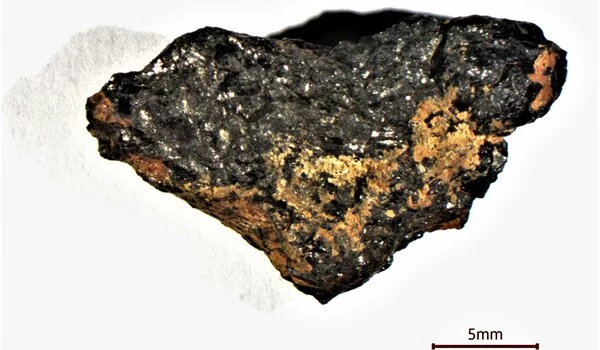
Proton beam also rules out solar system
The surprisingly low level of silicon in the Hypatia stone targets was the first important new hint from the proton beam investigations. The silicon, chromium, and manganese were all less than 1% of what would be predicted for something created within our inner solar system. Furthermore, high iron, high sulphur, high phosphorus, high copper, and high vanadium were noticeable and unusual, according to Kramers.
“We discovered a constant pattern of trace element abundances that is unlike anything else in the solar system, primitive or advanced. This is also not supported by objects in the asteroid belt or meteors. So we explored outside the solar system next” Kramers claims.
Not from our neighnourhood
Kramers then compared the Hypatia element concentration pattern to what one would anticipate to see in the dust between stars in our Milky Way galaxy’s solar arm. “We wanted to examine if the pattern we detect in Hypatia matches the pattern we see in ordinary interstellar dust in our arm of the Milky Way galaxy. Again, there was no resemblance “Kramers adds.
At this stage, the proton beam data had also ruled out four possible locations for Hypatia’s formation. Hypatia did not form on Earth, was not a comet or meteorite, did not form from ordinary inner solar system dust, and did not form from average interstellar dust.
Not a red giant
The next simplest possible explanation for the element concentration pattern in Hypatia, would be a red giant star. Red giant stars are common in the universe. But the proton beam data ruled out mass outflow from a red giant star too: Hypatia had too much iron, too little silicon and too low concentrations of heavy elements heavier than iron.
Nor a supernova Type II
A supernova type II was the next ‘suspect’ to be considered. Type II supernovae produce a lot of iron. They are a rather common form of supernova.
Again, Hypatia’s proton beam data ruled out a promising suspect with ‘chemical forensics.’ As the source of odd minerals like nickel phosphide in the pebble, a supernova type II appeared exceedingly unlikely. In addition, there was too much iron in Hypatia in comparison to silicon and calcium. It was time to look attentively at the predicted chemistry of one of the universe’s most stunning explosions.
Heavy metal factory
A more unusual type of supernova also produces a lot of iron. Type Ia supernovae occur only once or twice per galaxy per century. However, they produce the majority of the iron (Fe) in the universe. The majority of the steel on Earth was previously the element iron, which was generated by Ia supernovas. Furthermore, established science claims that some Ia supernovas leave distinct ‘forensic chemistry’ indications. This is due to the configuration of some Ia supernovas.
First, a dying red giant star falls into a highly dense white dwarf star. White dwarf stars are often extremely stable for very long periods of time and are quite unlikely to erupt. There are, however, exceptions.
In a binary system, a white dwarf star might begin ‘drawing’ materials from another star. It is possible to suggest that the white dwarf star ‘eats up’ its companion star. The white dwarf eventually becomes so heavy, hot, and unstable that it explodes in a supernova Ia.
Accepted scientific theoretical models suggest that nuclear fusion during the supernova Ia explosion will result in exceedingly unexpected element concentration patterns. Furthermore, the white dwarf star that explodes in a supernova Ia is literally blown to atoms. The matter from supernova Ia is sent into space as gas atoms.
